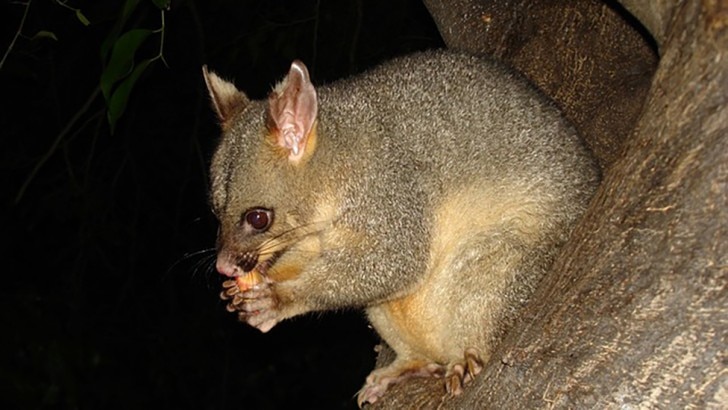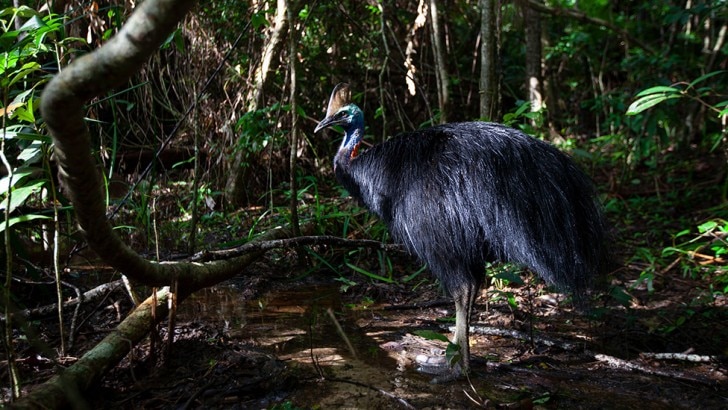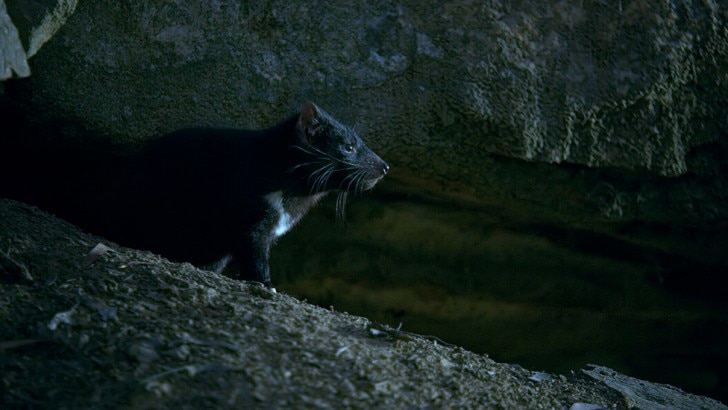BBC Earth newsletter
BBC Earth delivered direct to your inbox
Sign up to receive news, updates and exclusives from BBC Earth and related content from BBC Studios by email.
Animals
The 76-year old making a road kill map of Australia.
Bruce Englefield was driving home in the dark when he rounded a corner and saw three furry possums gathered in the middle of the road. He braked and swerved, but one of the marsupials moved the wrong way and went under his wheel. As anyone who’s run over an animal can tell you, the sensation of hitting the creature was horrible. Making matters worse was that Englefield was only driving after dark that night to save an animal’s life. A tourist had seen a wombat joey stranded near the roadside after its mother was killed by a vehicle. Englefield found the orphaned wombat and was taking it back to his wildlife park when he hit the possum. “You can imagine my feelings at the time,” he says. “I’d saved one animal and killed another.”

The mother wombat and possum were just two of the estimated four million Australian mammals that are killed by cars and trucks each year. Many collisions happen between dusk and dawn, when animals are harder to see. In total, the annual death toll could reach 10 million animals once bats, snakes and birds are added to the tally, according to rough estimates by Englefield, a PhD student and researcher in veterinary science at the University of Sydney. Nobody knows the true number, because not everyone reports roadkill, and many injured animals walk off and die in the bushes where people can’t see them. The lack of reliable data is why, at the age of 76, Englefield became an app developer.
While many people retire in their 70s, the British-born former television technical director has funded and launched a free app, called Roadkill Reporter, to encourage drivers – or, for safety’s sake, their passengers - to take pictures of dead animals they come across. The app automatically stores the time and GPS location alongside the sometimes gruesome images. Eventually, he hopes to build a map of Australia dotted with deceased animals, to identify the deadliest stretches of road. The data may also reveal which of Australia’s many efforts to reduce roadkill are working most effectively.
You can imagine my feelings at the time, I’d saved one animal and killed another.”
Researchers are trying to cut the animal road toll using established measures, such as koala-friendly tunnels and wildlife-proof fences, as well as novel experiments, such as so-called virtual fences. The virtual fences consist of small boxes that are placed along the roadside on posts. The boxes sense a car’s headlights approaching and flash out a strobe light while making a warning, bubbling sound. The goal is to give animals time to move away without panicking, since panicked animals often run into the path of a vehicle. Elsewhere, researchers have tried tagging koalas with wireless transmitters, which activate warning signs for motorists when a koala approaches the roadside.
Measures to warn drivers, and protect animals, can’t come soon enough for some threatened species. Throughout evolution, predator and prey have changed and adapted together, giving prey species time to hone their behaviour to cope with their predators’ tactics. Yet, in evolutionary terms at least, cars appeared on the scene suddenly – and Australia’s mammals can’t comprehend how to keep themselves safe from the new, four-doored killers, says Englefield. Cars, he says, “travel faster than any other known predator and they strike at random, because they are not killing something to eat.”

Several species are particularly threatened by the expansion of roads and vehicles. The Queensland cassowary, a reclusive, blue-headed bird that looks a little like an emu, is down to its last few thousand survivors. When researchers studied the deaths of 140 southern cassowaries, they found that vehicles were responsible for more than half of deaths. In other states, such as New South Wales, local koala populations could be wiped out by a fatal mix of habitat loss, dog attacks and vehicles.
Ironically, people’s efforts to save a species can make some creatures more vulnerable to becoming roadkill. That’s what has happened to some Tasmanian devils, a breed of snarly black marsupials that survives only on the Australian island of Tasmania. Wildlife researchers started rearing devils in captivity in a desperate effort to save the species, after 80 percent of the population was lost to facial tumor disease, a contagious cancer around the mouth that causes devils to starve to death. But these breeding efforts sometimes have tragic consequences when the devils are released back into the wild. A study by the University of Sydney’s Catherine Grueber and others found that devils were more likely to be killed by vehicles if they’d spent longer in captivity. David Pemberton, the manager of the Save the Tasmanian Devil Programme at the Tasmanian Government’s Department of Primary Industries, Parks, Water and Environment, has seen devils that had been released from captivity naively trot up to his vehicle.

Adjusting after captivity isn’t the only issue for these carnivores: wild Tasmanian devils often scavenge other roadkill, and tend to treat roads as handy thoroughfares. “We remove roadkill when we’re working in an area, but they still go to the blood spots on the road,” says Pemberton. “It just smells like McDonalds to them.”
Because cars often dispatch younger devils, who are in the prime of breeding, Pemberton says vehicle strikes could tip the species over. “It’s not the cancer that’s going to drive them to extinction, it’s other threatening processes, of which one is road kill,” he says. About 300 road deaths are reported each year, but the true figure is at least 1000, he says. The Tasmanian state government is trialing its own roadkill reporting app, called Roadkill Tasmania, and encouraging people to report deaths of devils, wallabies and other creatures. Meanwhile, Pemberton and his crew do their best to educate people who are living and driving in devil territory, asking them to slow down.
Eventually, says Englefield, animals will adapt their behaviour to the deadly metal predators on the roads. “Animals that get injured and return to the wild are adding to a pool that remember, so over the years and centuries animals will realise,” he says, “But it’s going to take a very long time.”
Until then, he hopes his app and other wildlife protection measures will give animals time to learn – without being made extinct while they do so. “The road kill problem won’t be solved by one thing alone,” he says, “it needs everything possible put together.”
This article was originally published November 2019.